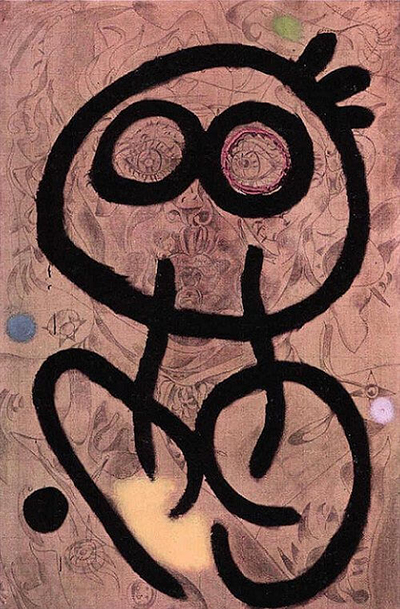This self portrait provides a visual example of how Miro would reject traditional art and aimed to replace it with new modern styles. He went over a detailed drawing with several aggressive strokes of paint which were deliberately out of sync with the original work.
The artist very loosely follows the outline of the original drawing, circling the head and eyes. There is also a shoulder length part of his torso, and the neck is featured too. It is crude, particularly to those who do not understand the path taken by Miro during his career or of his determination to replace traditional art. One can compare this to graffiti that we find around urban areas in the modern day, but of course there is much more thought and quality in what we find here. He made the initial drawing in fine detail before copying it and adding the paint over the top. There was a contrast between detail in the two mediums, and we also saw a number of re-works within the 20th century where artists deliberately went in completely different directions in order to visually turn their back on what had gone before. Sometimes these were amendments to their own work, other times others'.
The roots of abstract art within his career can be traced back to the early cave paintings, of which Miro was particularly interested. He was technically skilled in a range of mediums but preferred to move away from his early work and sought to bring new ideas into Catalan and European art in the early 20th century. He was not alone in this, and found favour with a number of surrealists who appreciated the many qualities that he had as an artist. He did not want to formally join any group particularly, but was happy to share ideas and friendships with many of these notable names. Miro himself changed his level of abstraction over time, eventually moving to a very low level of detail which was completely opposed to the type of work that he produced in the early days.




